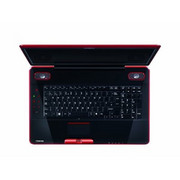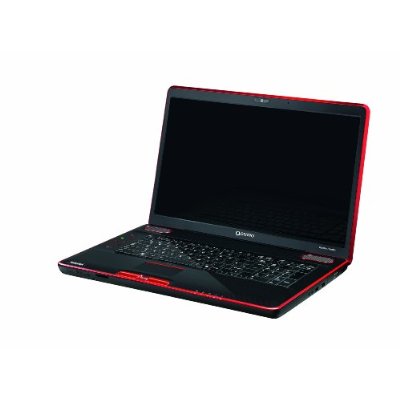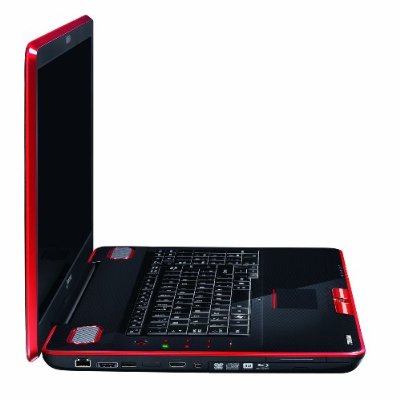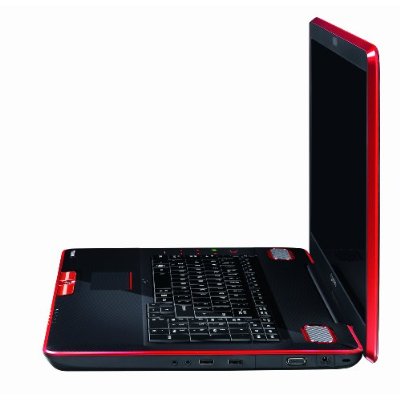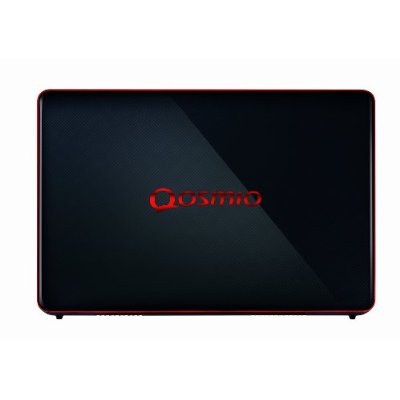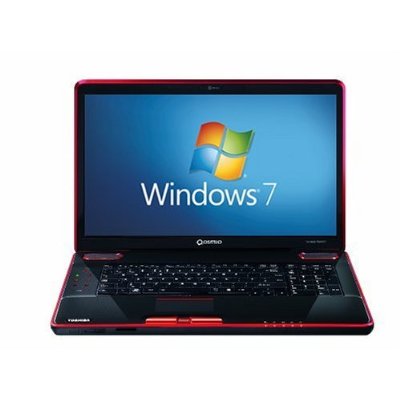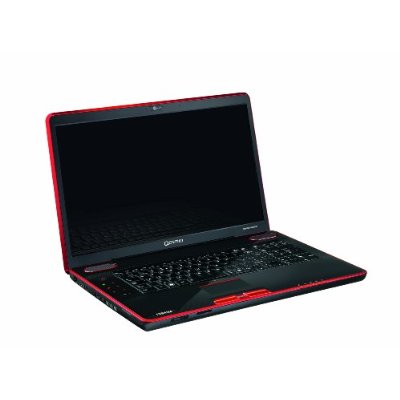Toshiba Qosmio X500-10T
Specifications
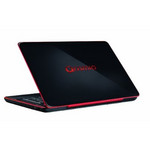
Price comparison
Average of 3 scores (from 3 reviews)
Reviews for the Toshiba Qosmio X500-10T
Source: Digital Versus
 Archive.org version
Archive.org versionPremium gaming power and performance. The Qosmio X500 is designed for gaming, high definition entertainment and high performance computing. The Qosmio X500 is one of the most powerful laptops currently available, and nothing stands in its way. But it's also a transportable, rather than a portable, computer, and we were disappointed by its speakers and trackpad.
Single Review, online available, Medium, Date: 04/09/2010
Rating: Total score: 80%
Source: CNet
 Archive.org version
Archive.org versionToshiba's Qosmio range aims to pack all the fun of a desktop PC into a laptop chassis.
The configuration of the Toshiba Qosmio X500 that we reviewed, the X500-116, packs a powerful punch in terms of features and performance. That goes some way towards making up for its huge size and unappealing colour scheme, but we also think it's slightly too expensive.
Single Review, online available, Medium, Date: 04/08/2010
Rating: Total score: 71%
Source: Trusted Reviews
 Archive.org version
Archive.org versionIt’s been a while since we looked at one of Toshiba’s Qosmio laptops. In fact the last one was the G50-115 way back in 2008. A well-built and (generally) incredibly well-specified powerhouse of a system, the Toshiba Qosmio X500-10T is let down by Toshiba’s obsession with glossy plastic finishes and a surprisingly weak graphics card. However, if you can manage an extra £100, the next model up somewhat remedies this latter issue, making it the better option.
Single Review, online available, Long, Date: 02/10/2010
Rating: Total score: 70% price: 70% performance: 80% features: 70% mobility: 90%
Comment
NVIDIA GeForce GTS 250M: The GPU has 96 shader cores but only a 128 bit memory bus that supports GDDR5 memory. With DDR3 memory, the GTS 250M performs clearly worse. Because of the 40nm process (and a selection process) the 250M offers a relatively low power consumption (the 260M needs 10W more).
Non demanding games should be playable with these graphics cards.
» Further information can be found in our Comparison of Mobile Graphics Cards and the corresponding Benchmark List.
Intel Core i7: The Intel Core i7 for laptops is based on the LG1156 Core i5/i7 CPU for desktops. The base clock speed of the CPUs is relatively low, but because of a huge Turbo mode, the cores can dynamically overclock to up to 3.2 GHz (920XM). Therefore, the CPU can be as fast as high clocked dual-core CPUs (using single threaded applications) but still offer the advantage of 4 cores. Because of the large TDP of 45 W / 55 W, the CPU is only intended for large laptops.
720QM: The Core i7-720QM is the slowes Core i7 Quad Core in 2009 and clocks between 1.6 and 2.8 GHz (due to the Turbo Mode). Therefore, it combines the advantages of a slow quad core CPU with a fast single core one. Compared to the faster Core i7 mobile CPUs, the 720QM only features 6MB L3 Cache.» Further information can be found in our Comparison of Mobile Processsors.




